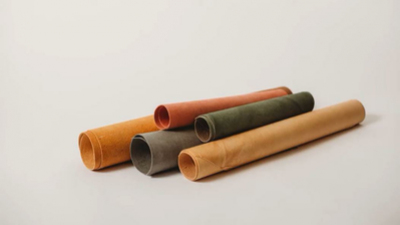Fashion Designing in an Inclusive World
This project is a collaboration of two partners, both with very interesting backgrounds.
Rut Turro, from Barcelona, Spain, is a social entrepreneur working on Inclusion in Fashion industry. Rut has started her journey with disability back in 1999 in India and has been exploring this path ever since.
Darja Malesic, has worked in the High Fashion industry since 1997, as a fashion designer for various luxury brands and as an independent design consultant.
Rut contacted Darja with a first proposal to jointly transform her garments, that were based on disability needs, into inclusive fashion items within a capsule collection (inclusive means when the product is designed in a way that can suit anybody, including the disabled community, without the need to adjust or modify it).
In the past, Rut had developed a clothing brand focused mainly on the sitting body, adapted specifically for wheelchair users and other people who are permanently seated.
Even if the product covered all the main issues, it was not well accepted. Rut then understood that disabled people much more prefer to choose from a variety of brands, with a certain style that they can identify with, and that can offer more self-expression, so she began looking for a new way to introduce inclusiveness directly into fashion brands, instead of making her own adaptive clothing line.
As partners with very different knowledge bases, Rut and Darja had many talks and video conferences, discussing the challenges that people with disabilities face when it comes to regular clothing. Darja never thought about this market before, and was shocked with the fact that so many clothes that she has designed within the fashion industry would never be able to reach the disabled community.
There are thousands of new garments coming on the market each season, but there is a massive disabled community that will never be able to wear any of it because they do not function for them. There are clothes that are attractive, but which can be difficult to dress, fasten, or do not fit properly.
On the other hand there are adaptive clothing lines that meet disability requirements and which may function well, but often are not very attractive.
For example, the issue of the sitting body. It shows the challenges and offers solutions, one of which is illustrated by a working sample which is developed, the Sitting Jeans, jeans that are designed for the sitting as well as for the standing body.
In the last 50 years the amount of time we spend sitting has increased hugely, but do the clothes we buy and wear reflect this?
And what about the number of people who must sit most of their waking hours owing to a temporary illness or injury, or because of disability.
As designers would it not be a good idea to consider a sitting body shape as well as standing?
The created jeans trousers are an example, how to combine function and fashion to achieve comfort while sitting and how to organise garment details in a way that works for every-body and makes dressing easier for every-body.
All done in a fashionable and stylish way that would empower any user.
This is the main purpose of Inclusive design, that everyone can benefit and enjoy it, with or without disability.
1.2 billion disabled community (or 15% of the world’s population) that live all over the globe.


















































































